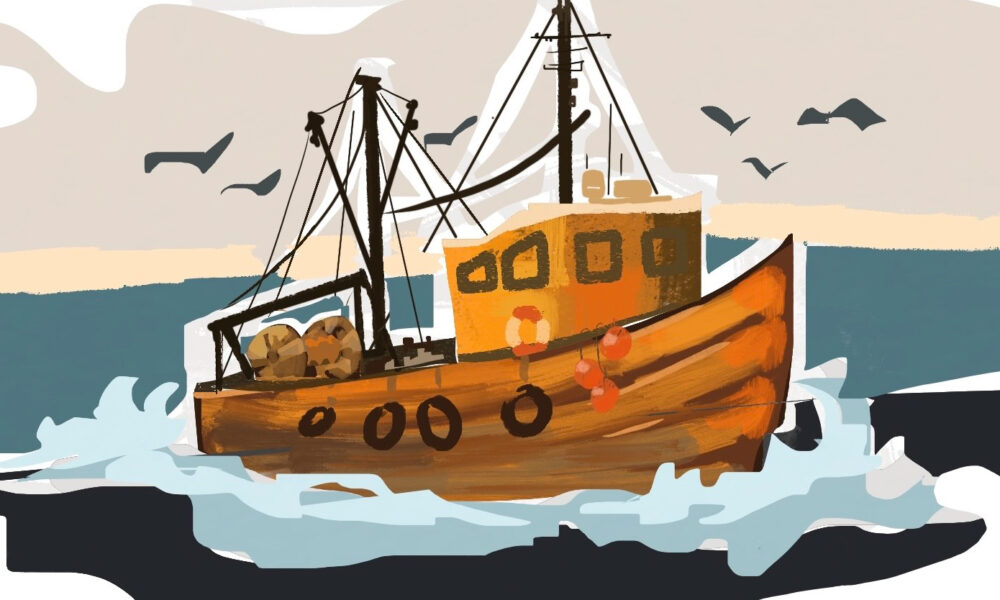While “transboundary fishery governance” may not immediately evoke images of glamorous public servants heroically striving toward healthy ecological practices, it turns out to be a critical, yet often overlooked aspect of our food supply. Fishery management is the practice of regulating the extent of fishing, specifying permitted and restricted areas, and managing environmental conditions in order to ensure robust fish populations. Without it, we face the risk of depleting fish populations and the ensuing collapse of marine ecosystems.
Evelyn Roozee, a PhD candidate in Natural Resources Management and Policy at McGill, spoke to The Tribune about a recent paper investigating risk, control, and trust in transboundary fishery networks. Roozee, the first author of the paper, collaborated with researchers from Montreal, Texas, and the Netherlands to perform a quantitative analysis of fisheries in Canada and the U.S. bordering the Salish Sea.
Roozee explained that, theoretically, each country has complete rights to use resources within 200 nautical miles of its shore. However, fish aren’t always interested in following international human law.
“Fish don’t really abide by political boundaries,” Roozee said. “They can have pretty large geographic ranges. So, oftentimes, they move between those economic exclusive zones, and that requires states to work together to conserve the species.”
As Roozee explained, the practice of fishery management within one country is hard enough, let alone trying to collaborate across national borders.
“There’s lots of different groups that are involved. Fishers oftentimes don’t like managers, because managers are the ones telling them, ‘you can’t go out, you can’t fish this species here,’” Roozee said. “Similarly, scientists can also be seen as in opposition with fishers and managers, because they’re trying to alert everyone on what the science is saying about how the fish stock is doing. And that doesn’t always align with political goals, or with business and trade goals.”
These conflicting identities and motivations can create tense situations within a single fishery, but when two fisheries controlled by different governments have to collaborate, relationships get even hairier.
“In the paper, I talk a lot about how to break down those identity issues or those them-versus-us perceptions, mainly through building trust, to come together collaboratively because the key to collective action is collaboration,” Roozee said.
To address this issue, the researchers applied principles from the business world, building on an influential business strategy paper that outlines the relationships between risk, control, and trust in economic alliances. Their research explores how these same concepts can be applied to natural resource management.
“Risk is sort of the key variable that needs to be reduced. Essentially, if the risk is too high, people won’t work together,” Roozee said. “However, fisheries are inherently pretty risky, because of the nature of the resource. It’s really hard to know a lot about fish: They’re underwater, they move a lot, [and] their populations are very erratic.”
Increasing trust and controls are two major ways to combat risk, both in business and fishery management.
“For example, if I’m a fisher, and I don’t know if I will be able to catch enough fish to support my business, I need to trust the information that the scientists are giving me and the managers are telling me about where the fish will be and how much I can take,” Roozee explained.
Control, on the other hand, is more about regulation. This may take the form of banning fishing in a risky area or on risky days.
“However, a lot of our research now is sort of showing that control doesn’t affect risk directly,” Roozee noted. “It affects risk through the building of trust.”
This reflects the general trend of the research, demonstrating that while trust is more difficult to build and maintain, it is ultimately more powerful in reducing risk than control is. Additionally, Roozee emphasized that although her research did point to some general trends, the complexity of each unique fishery area makes it impossible to adopt a one-size-fits-all strategy.
“You can’t just storm into the situation thinking you know best,” Roozee said. “There’s a lot of history you have to learn. There’s a lot of context that’s really important before you start collaborating. You have to do your homework.”








